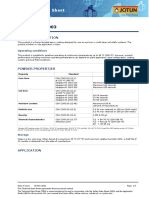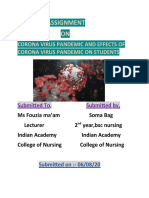0% found this document useful (0 votes)
101 views7 pagesVeo 3 Tech Report
Veo is a text-to-video generation system that synthesizes high-quality video and audio from text prompts, utilizing a latent diffusion model for efficient learning. The system has undergone extensive safety evaluations and responsible development practices to mitigate risks such as disinformation and bias in generated content. It aims to enhance creativity and accessibility in video production while addressing potential misuse and ensuring adherence to safety policies.
Uploaded by
cheetarafaeCopyright
© © All Rights Reserved
We take content rights seriously. If you suspect this is your content, claim it here.
Available Formats
Download as PDF, TXT or read online on Scribd
0% found this document useful (0 votes)
101 views7 pagesVeo 3 Tech Report
Veo is a text-to-video generation system that synthesizes high-quality video and audio from text prompts, utilizing a latent diffusion model for efficient learning. The system has undergone extensive safety evaluations and responsible development practices to mitigate risks such as disinformation and bias in generated content. It aims to enhance creativity and accessibility in video production while addressing potential misuse and ensuring adherence to safety policies.
Uploaded by
cheetarafaeCopyright
© © All Rights Reserved
We take content rights seriously. If you suspect this is your content, claim it here.
Available Formats
Download as PDF, TXT or read online on Scribd
/ 7

























































































